Sometimes I Fail – Kilimanjaro
This article may contain affiliate links where I make a small commission for purchases you make from links that you click from this article. By purchasing through these links, you support me at no additional cost to you. Thanks for your support.
I’ve been talking and writing a lot about career breaks lately, which has coincidently got me thinking about the original career break I took in 2006. When I left my job and flew to Africa to climb Kilimanjaro, I had high hopes of summiting and starting off my year of travels on a successful note. If you are a new reader of my blog, you may not know this story, but I share it because it’s a good example of things not always working out the way you planned – and how to cope with that as you travel.
I never thought failure was an option. I had just run a half marathon before leaving New York City, and I was ready to take on anything physically the world had to dish out. I arrived in Moshi with my sister, Cyndi, and my friend, Heather – all of us runners and all of us experiencing our first trip ever to Africa. The new culture and economic conditions were shocking – but not nearly as shocking as what we were getting ourselves into by hiking Kilimanjaro.
Table of Contents
What to Expect
We sat at a desk, and they told us about what to expect with this altitude hike – we would be tired and cold, experience shortness of breath, and have a loss of appetite. All of this was fine with me except the loss of appetite news – it was a bit disturbing, as I love to eat and couldn’t imagine how I wouldn’t be hungry after such physical days of trekking. But altitude has a funny way of disrupting your body.
We set out with a large crew. Our guide, Douglas, was the most patient, quietly confident personality I had met. After a day with him, you trusted him with your life – which is what we were literally doing. We also had Edward, the assistant guide; Gudluk, our camp cook; Simon, our ‘waiter,’ and eight porters carrying our camp.
The days were hard – up, up, up – and my stomach seemed to be on pins and needles all day, wondering if I could make it at these altitudes. Most days, I was more mentally exhausted than physically exhausted. Kilimanjaro and the lack of oxygen puts your mind and body on a roller coaster. You turn so fast you get whiplash – one minute, you’re great, and the next, your stomach is in knots, and your brain can’t form a complete sentence or thought.
During the trek, we all joked around about this whole experience being a ‘hard reboot’ of sorts. We came here to the Machame gate clean, in our technical gear and packs, and then someone just turned off the power – there was no nice shutting down of active programs in our brains. It was like the blue screen of death – you were screwed and had to start all over. Your concept of what a toilet was had changed, clean clothes, good campsite – these definitions all had to be reset in our minds.
Douglas was always monitoring us. He even went to great lengths to determine what we might not be telling him by going through our lunch box garbage and leftover dinner to see if we were eating everything. After all, loss of appetite is one of the symptoms of altitude sickness. I kind of felt like a patient who was not really able to care for myself. Yet it was nice to know that someone was looking out for us.
Hitting a Wall
On Day 3, I lost my desire to do anything but follow Douglas up the hill, eat, and sleep. We hiked as high as 15,100 ft to the base of the lava tower. Headaches and nausea would come and go within a few minutes like a wave. Cyndi and I decided to take Douglas’s advice and go to the top of the lava tower since it would help acclimate us to the altitude and followed the typical altitude acclimation advice to “hike high and sleep low.” It was another 230 ft. higher (and the highest point I would ever reach, coincidentally).
We had to find handholds in the rock and scale across ledges no larger than 6 inches wide. Douglas would show us the handholds and where to put our feet. Using all fours and crawling at times, we made it – panting for air. But as anticipated, when you work that hard for something, it’s worth it. The view was amazing – a stunning view of Kilimanjaro and the trail we had just hiked. It was a barren land of volcanic rock, dead glaciers, and dust. Sadly, many of these glaciers were around not more than seven years ago. But they did their job; they carved their landscape and disappeared.
My hiking packing list: essential gear for any hike
The next morning I woke up in a trance like state – I didn’t feel right at all. I had some tea and went to the tent to get packed up in slow motion, and I sat inside the tent for a long time. All of a sudden I had a hot flash so I got up and went outside for fresh air. I was nauseous. I sat there for a while, and Douglas came over. He asked me how I was doing, and I told him I felt sick. In his African accent, he said, “Vomit, and you will feel better”. Since I basically did whatever Douglas told me to do – I ran behind the tent and threw up. On a positive note, this was definitely the most beautiful setting that I’ve ever puked in.
I felt a little better, so we continued trekking that day to high camp (15,241 ft.) – slowly. This was the night we were supposed to attempt a summit – starting at midnight. Upon Douglas’s advice, I laid down for a nap and tried to find my ‘happy place.’ The nap was unsettling as I was shivering, yet I was warm. My mind raced into weird places –but mainly, it kept worrying about the possibility of coming this far and not making it.
Simon came into our tent with a large platter of spaghetti, fries, and soup. We all groaned as no one wanted to eat. It was one of the most excruciatingly painful meals I’ve had in my lifetime. Douglas stood there and made us eat. He was silently assessing each of us – mainly me as I was feeling terrible, shaking at times uncontrollably. He told me to put on more layers of clothes. I now had three layers on – still shivering – I could barely hold the spoon in my hand. That’s when he made the inevitable decision – to not let me go any further.
Things they don’t tell you about Kilimanjaro
The Tough Decision
We were all devastated. He asked Cyndi and Heather to pack up my things, and we all 3 sat and cried. Douglas said – “No need to cry – the mountain isn’t going anywhere – you can try again.”
What seemed like 5 seconds was probably 5 minutes – I was packed and whisked away from the camp – 5 hrs before I was supposed to start the final summit that night. I was banished from the mountain. I could practically hear it laughing at me. Gudluk – our cook and a porter was sent with me to get me down. Cyndi and Heather sat in the tent in complete disbelief – as if it were a game of Survivor and they were just blindsided that someone from their alliance had to leave the island, and they never saw it coming. Nor did I.
As Gudluk, the porter, and I left the high camp perched above the clouds at sunset, I heard a tent full of porters singing “How Great Though Art” in Swahili. This is one of my favorite songs and every time I hear it I think of my Grandfather’s funeral. I was in tears stumbling down the rocks trying to follow Gudluk I went through so much hardship and to not make it.
We ‘walked’ for 5 hours down the mountain that night to try to get me to a safe altitude. I had never felt so sick and sad. I barely remember those 5 hours, and my mind and body were a mess as Gudluk watched over me carefully. I wanted to stop and lay down, but he was under strict order from Douglas not to let that happen until I got to 10,000 feet.
The next day I sat at the low camp watching all of those who made it to the summit arrive to my low camp joyous. It was a strange kind of torture for me as they all took pictures with their guides and celebrated. The next day, Douglas told me that if I hadn’t quickly descended that night before, I most likely would have come down on a stretcher as I wouldn’t have been able to walk down myself. And based on my blurry memories of that descent – I totally believe him! I owe him a great deal for constantly watching my health and making the decisions that I was incapable of making.
This was the beginning of my travels – and never did I think that I wouldn’t make it to the summit. I questioned the rest of my travels for a moment – should I really be doing this career break? What other failures would I have to face?
After a lot of soul-searching, I decided that my accomplishment was the failure itself. Learning to fail and pick yourself up is an important lesson for all of us. Sure – I could have decided to quit my whole career break and go home – but maybe this was the universe’s way of preparing me for more failure and knowing that I could get through it. In the end, I was happy for my accomplishment of failure.
For me – it wasn’t the summit – but the journey.
Note: This is a very condensed version of the story of this failed Kilimanjaro climb from 6 years ago. If you want the whole play-by-play of each day and what it’s really like to do this climb on your body and mind – check out my original post here.
And yes – after writing this and revisiting this story…I want to go back more than ever and finish what I started! I always knew I would go back one day and attempt it again, but it wasn’t until now that the thought seemed exciting again.
What have you learned from your failures? Please share in the comments.

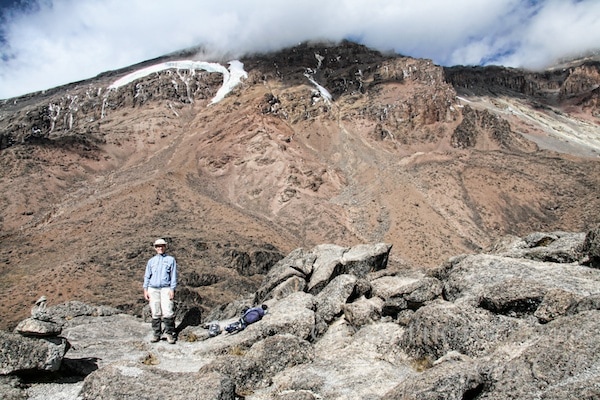
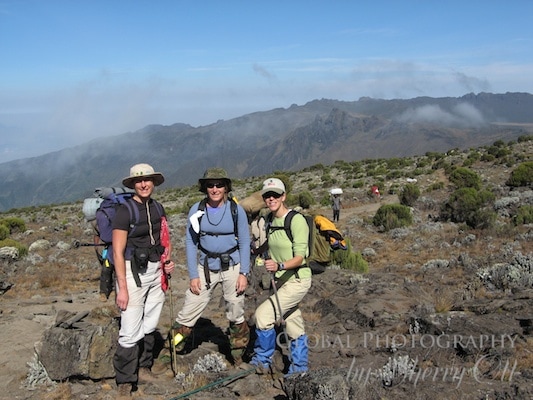
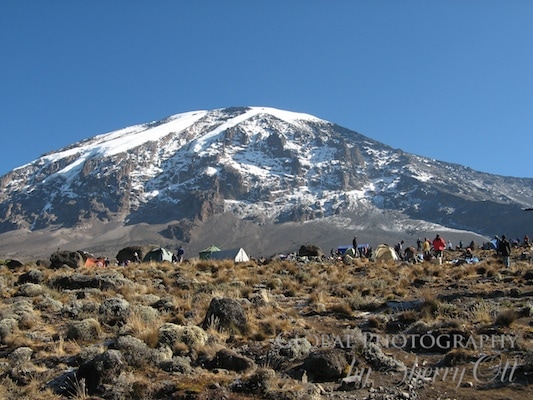
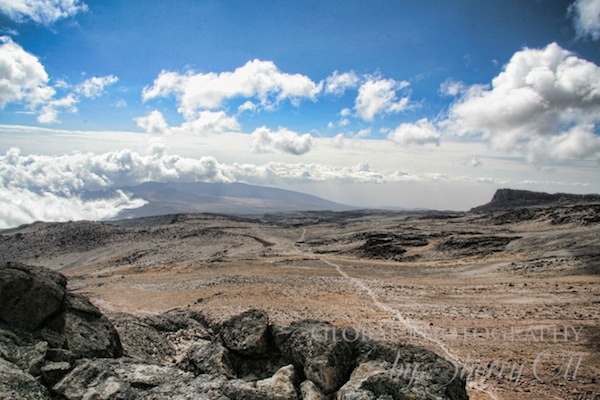

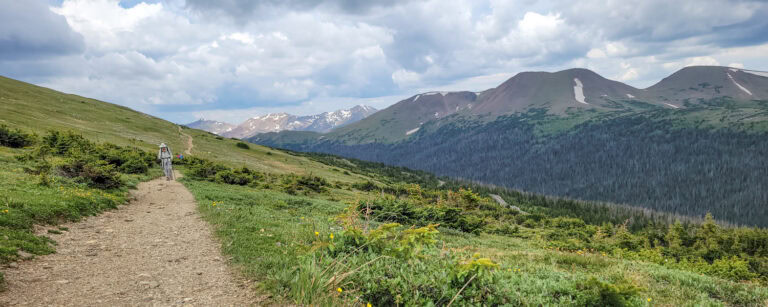



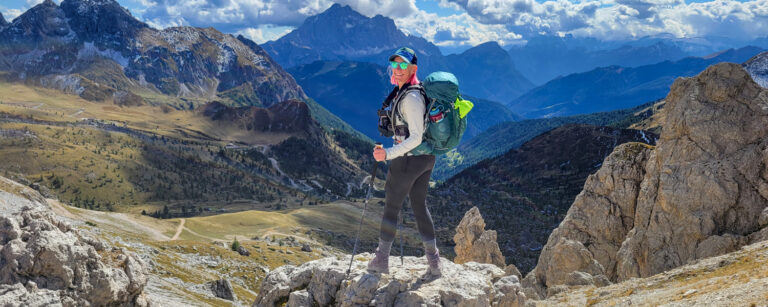
I’m sure you are thankful that you had a good guide who assessed your situation and sent you down when he did (to try another day). As I was coming down from the Kilimanjaro summit I saw a man, obviously very sick and dazed from altitude sickness, staggering up with the help of his guide who seemed to be supporting most of his weight. I still wonder if he made it back down safely.
But of course, when we have selected professional guides whom we trust, we have to agree with them when they make the difficult decisions. It’s hard to turn away from a goal when you are so close.
I was able to summit, I think partly because my husband and I paid for an extra day on the way up so that we could acclimatize better. In another group that was taking the usual number of days (one less than us), only half of them were able to summit. Despite paying a big famous company for heated dining tent AND shower tent! It was time, not money, that they should have been spending.
Don’t wait too long before trying again; age makes us more susceptible to altitude sickness. And I’m not calling you old – I summited when I was 51.
Thanks for sharing this story and for continuing your travels. Mary pickford said'”This thing we call failure is not falling down, it is not getting up again.”
It certainly is all about the journey. I recently climbed Kilimanjaro myself and made it to the summit, but it was a hard trek and much harder than it’s made out to be. A lot of people go in with high expectations and then fail to summit. I can only imagine that I would have been devastated if I didn’t make it, but it’s these things that can make you even more determined than ever.
I hope you get your chance to try again and conquer Kilimanjaro. It’s really something else! The sunrise from the summit absolutely took my breath away.
Wow. It would take a lot of courage for me to write that I failed – I admire your strength!! I very much want to climb Kili – and to be honest, this post scared me a bit! But it’s good to know both sides of it. I look forward to your post in the future where you summit!
Wow! Great story, and a really good lesson on the importance of really picking your guide wisely. Looking forward to reading about your next attempt!
I needed to read this today. Thank you for sharing! xo.
I love the story , thanks for sharing
I wasn’t able to climb Kili, either, but it was due to food poisoning. Moral of the story is to plan the safari for *after* the climb.
I’m sorry I didn’t get to try, but glad I got to see Kili while there were still glaciers up top. Maybe some day…
Great post! Thanks for sharing. I’m going to be climbing Kili in February and am nervous/excited but after reading your story feel more mentally prepared about the possibility of getting sick. Hope you get the chance to do the climb again!
Do not put it on yourself at all. If you are able to sustain a maraphon, in your case the most important climbing success factor should have been a proper preparation. Maybe something wasjust missing there.
that’s awesome post
i blogged about something similar to this in my site
I have found some times failure can teach you more about yourself than success. It’s all about how you deal with it. All I can say is…what an experience!
that’s a great story, i must admit that its not that easy to climb a mountain i once tried to climb mt Kenya, but i swear it was the worst experience in my life especially because of the snow
Hi Sherri, I’m glad I was able to meet you at the NYC Event a couple weeks ago! This is a really great post and one that I’ll keep in mind as I prepare for my career break next year. It’s a good reminder to embrace the entire experience whatever it may bring.
You can try again next time. I am sure you will be able to handle it better. And also you can condition your body much better the second time around. The mountain won’t go anywhere. And you can recover from the ordeal. Try again. You will succeed.
Ah man, that sucks! I got altitude sickness pretty bad while we were in Tibet to the point I could feel fluid building up in my lungs. I was so mad because my body was forcing me to miss out on stuff and there was nothing I could do about it. Definitely lame-o. You should definitely go back though. Any excuse to visit that part of the world is a good one in my opinion! 🙂
Dan
I’m reading this while i’m thinking about climbing this August (interested? I’m looking for companions! It could be your 2nd attempt!). It is good mental preparation for what goes into it because I think we too often focus on the physical side to climb one of the 7 highest summits of the world. I think you are completely right about what you said, “it’s not the summit, but the journey.” I know you took got a lot of it, from the initial prep to the reflection years later and I look forward to having that experience as well. Happy travels!
Ha! That’s tempting! I know I need to get back sometime…I have a feeling it will start calling me soon…
Good luck with your trip – it is a super experience – lots of time to think – so remember to prepare your brain too!
Kilimanjaro is the great adventure place who like hiking in the mountain. The problem according to me they charge more fee for hiking. like up to $800 fee but the place is awesome to travel and spend vacation in Tanzania.
Tanzania is Kilimanjaro..
Kilimanjaro is Tanzania !!!
http://lombokwandertour.com
Wow, such an amazing post…
Thanks – are you thinking of hiking Kili sometime soon?